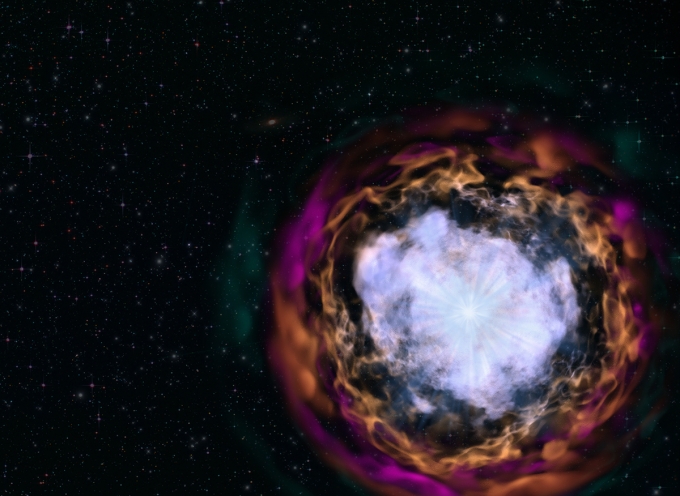Humans have witnessed the supernova phenomenon thousands of times, and in every case the explosion has signaled the death of a star. Now, astrophysicists at UC Santa Barbara and astronomers at Las Cumbres Observatory (LCO) report a remarkable exception: a star called iPTF14hls that has exploded multiple times over more than fifty years. The observations, published in the journal Nature, are challenging existing theories of these cosmic catastrophes.
“This supernova breaks everything we thought we knew about how they work,” said lead author Iair Arcavi, a NASA Einstein postdoctoral fellow in UCSB's Department of Physics and at LCO. “It's the biggest puzzle I've encountered in almost a decade of studying stellar explosions.”
Scientists at the CalTech-led Palomar Transient Factory discovered the supernova in September 2014. Initially, it appeared to be an ordinary supernova, which would be expected to rise to peak brightness and then fade within the span of about a hundred days. The team, observed, however, that after fading, iPTF14hls again grew brighter, and it repeated that behavior at least five times over three years in a phenomenon that had never been seen before.
Examining archival data, the scientists were astonished to find evidence of an explosion at the same location in 1954. “For me, the most remarkable aspect of this supernova was its long duration,” said co-author Lars Bildsten, director of UCSB's Kavli Institute for Theoretical Physics. “It certainly puzzled all of us.”
Since the discovery, Bildsten has worked with UC Berkeley astrophysicist Dan Kasen to find an explanation. One possibility is that iPTF14hls is the first observed example of a “pulsational pair instability” supernova. According to that theory, the cores of massive stars become so hot that energy is converted into matter and antimatter, causing an explosion that blows off the star's outer layers but leaves the core intact. The process can repeat over decades before the final explosion, when the star collapses into a black hole.
“These explosions were expected to be seen only in the early universe and should be extinct today,” said co-author Andy Howell, a UCSB adjunct faculty member who leads the supernova research group at LCO. “This is like finding a dinosaur still alive today.”

Artist's representation of a supernova
